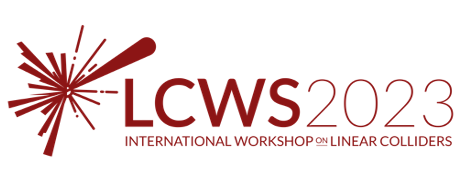Speaker
Description
ALICE is developing a novel vertex detector, "ITS3", to upgrade its experiential apparatus in LHC Long Shutdown 3 (LS3), in 2026-2028. The three inner-most tracking layers will be replaced by ultra-thin (<50 μm), wafer-scale (up to ~10 ⨉ 26 cm² in size on 300 mm wafers) Monolithic Active Pixel Sensors (MAPS) that are fabricated in a 65 nm CMOS process. At these thicknesses the sensors become flexible enough to be formed into cylindrical shapes of radii of 18, 24, and 30 mm. Stitching is employed to build single sensors that exceed the reticle size and are large enough to cover full half-cylinders. This allows constructing "modules" without mechanical and electrical supports. Finally, the power consumption of the sensors will stay below 20 mW/cm², enabling the use of forced air cooling. ITS3 will have extremely low material budget (<0.05% X0 per layer), consisting essentially of the sensors themselves, held in place by carbon foam slices. Together with its proximity to the interaction point and the intrinsically good spatial resolution of MAPS (O(5 μm) at pixel pitches of O(20 μm)), it will provide unprecedentedly good tracking and vertexing capabilities, improving the pointing resolution by a factor of 2 with respect to the current detector arrangement.
This contribution will report on selected recent key R&D achievements: the qualification of the 65 nm technology for particle tracking and radiation hardness, the integration of wafer-scale silicon detectors, and the first production of stitched sensor prototypes. The results show that the developed technology largely exceeds the needs for the ALICE ITS3, exemplarily seen in the measured radiation hardness of first sensor prototypes, which reaches 1e15 1MeV n-eq/cm² at room temperature – two orders of magnitude more than required. An outlook towards the integration of the detector will be given and emerging opportunities for future detectors based on bent, wafer-scale sensors will be highlighted.



